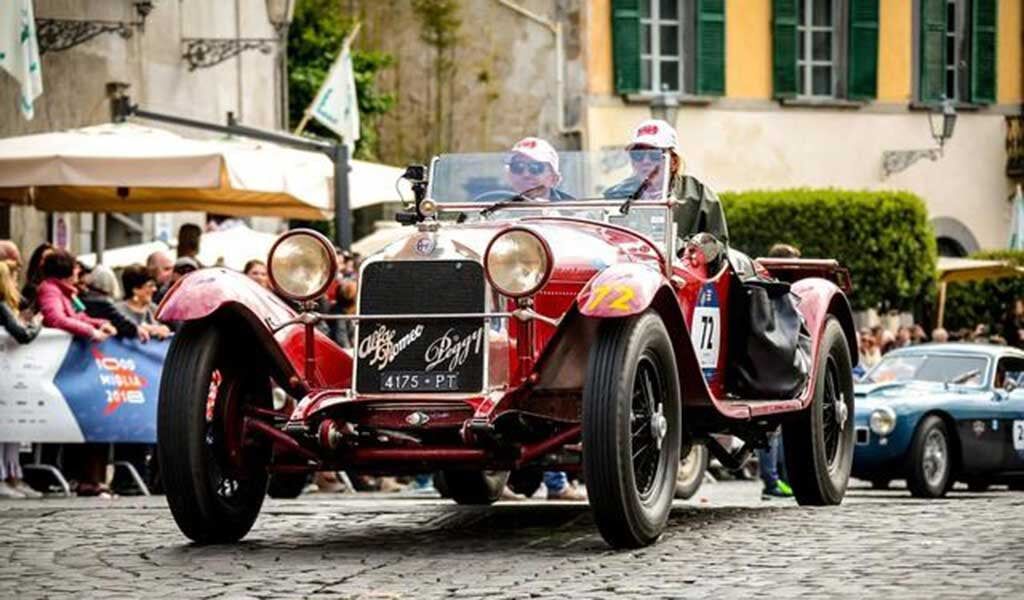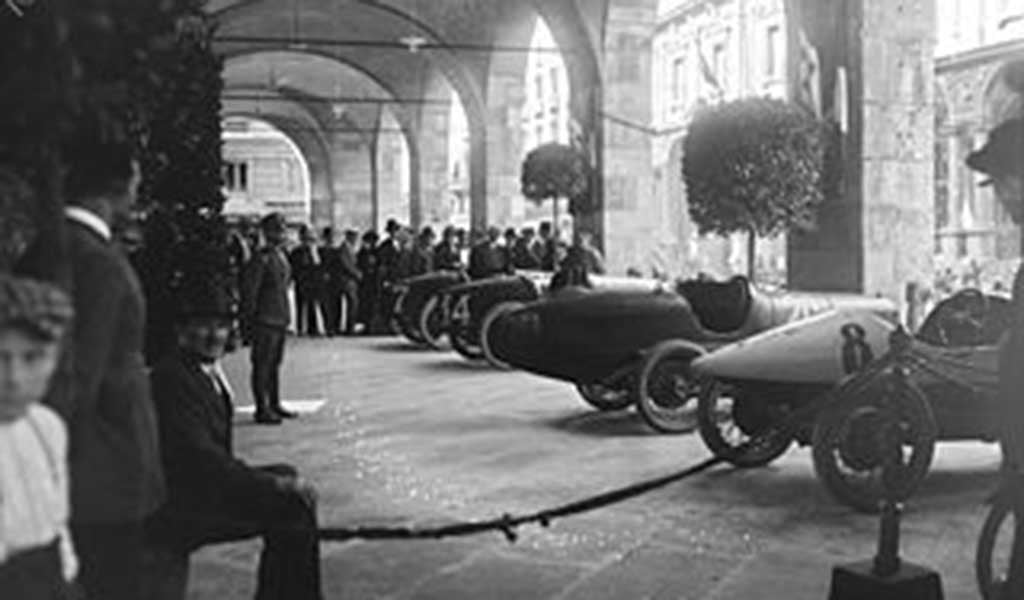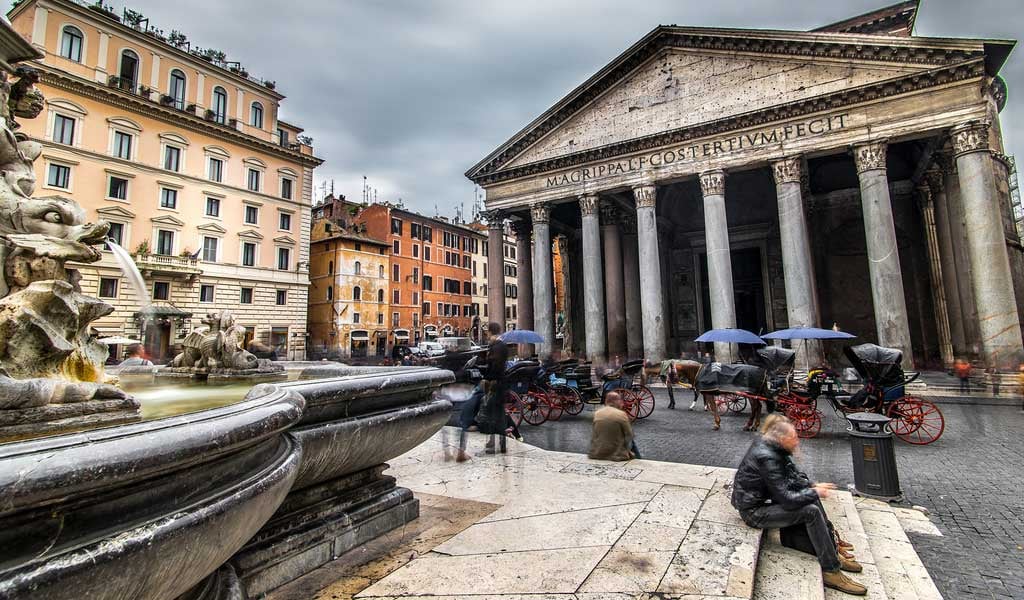10 facts you didn’t know about the Mille Miglia
The Mille Miglia or the 1000 miles race held in Italy every year has been called the "the most beautiful race in the world." Here are some facts about this race, which you can flaunt to other motorsports enthusiasts later.
 The Mille Miglia or the 1000 miles race held in Italy every year has been called the "the most beautiful race in the world." Here are some facts about this race, which you can flaunt to other motorsports enthusiasts later.
The Mille Miglia or the 1000 miles race held in Italy every year has been called the "the most beautiful race in the world." Here are some facts about this race, which you can flaunt to other motorsports enthusiasts later.The 1000 Miglia
Driving through the picturesque Italian countryside in a romantic vintage car, with no red lights to stop you, while you hurtle past crowds lined up along the streets to cheer you on, is a once-in-a-lifetime opportunity for a motorsport enthusiast. Over 450 entrants will be experiencing this at the 36th edition of the re-enactment of the legendary Mille Miglia race, which took off from the historic city of Brescia on 16th May, 2018.
The date, as per tradition, is one-week prior to the Monaco Formula One Grand Prix. The race is being held in four-stages over a course of four days, ending on Saturday, 19th May. This year, unlike every year, the race commenced on Wednesday instead of Thursday.

You may have heard about this thousand-mile race before, but here’s what makes it, in the words of Enzo Ferrari,
“The world’s most beautiful road race”
1. It began with the Milanese “theft”:

‘The journey of a thousand miles begins with one step’, says a famous quote by the Chinese philosopher, Lao Tzu. And so, it did. The people of Brescia considered their town and its surrounding area as the birthplace of Italian motorsport. They were shocked when the 1922 Italian Grand Prix was moved to the new Autodromo Nazionale Monza at Milan. At this juncture in history, Benito Mussolini’s Fascist Government was in power, with dreams of creating a new Roman Empire. Races in air, on land and in the water made the front pages of leading newspapers.
As a matter of pride, the Conte Aymo Maggi, along with his friends, Giovanni Canestrini, Count Franco Mazzotti and Renzo Castagneto decided to take the future of sporting in Italy into their hands, by conducting a race in Brescia. It would be a race unlike any other, which would capture the imagination of the Italian people.
2. The Roman Holiday:

When the idea of the race was being touted, it was suggested that it should be a road race. Building a new circuit would appear to follow in the footsteps of their Milanese rivals. The proposal to start it in Brescia and finish it in Rome, was shouted down as it would mean sharing the glory with Rome. To honour Brescian pride, they finalised a route from Brescia and back, with a turning point in Rome. The distance of the Brescia-Rome-Brescia drive would be approximately 1600 kilometres, to which Mazzotti is said to have exclaimed, “Sono mille miglia!” or “That’s a thousand miles”. And, so, in a uniquely Italian fashion, the Mille Miglia, literally “thousand miles”, was born.
3. Slow and steady:

Organisation turned out be strong point in making Mille Miglia a success, under the control of Castagneto. Smaller, slower displacement cars started first in this race, unlike in modern-day rallies, where cars are released at one-minute intervals with larger professional-class cars going before slower cars. This eased organisation. The marshals would not have to be on duty for a long period and roads, which had been closed for the race, could be opened soon. To calculate time taken till the finish line, the numbering of cars was done on the basis of their start time. If a car left at 08:14 it would be numbered #814.
4. An Italian affair:

In the initial years, only Italians participated. The organisers failed to attract foreign nationals. The lack of foreign entrants was balanced somewhat by women drivers, like Baroness Avanzo and the actress Mimi Alymer and Eugenia Spandon. Out of the 24 original Mille Miglia races held till 1957, only two were won by non-Italians.
The first of these victors was Rudolph Carraciola, a German ace driver, who drove a Mercedes Benz SSKL to set a new record of 16 hours and 10 minutes. It is believed that this foreign driver, driving a car of a foreign company saved the Mille Miglia from being just a local event. The only other foreign driver to win the event, Stirling Moss, did so twenty-four years later, in a Mercedes Benz 300 SLR, making the German company the only non-Italian carmaker to win the Italian classic. Moss also set the new, and yet to beaten, record of 10 hours 7 minutes and 48 seconds.

5. Improving the breed:
The Mille Miglia was the stage which introduced the world to the greatest performers in the automobile industry. It permitted the birth of GT, or grand touring cars, which are now sold all over the world. It brought international fame to luxury sports cars such as Alfa Romeo, BMW, Ferrari, Maserati and Porsche.

“The Mille Miglia proved that by racing over open roads for 1000 miles, there were great technical lessons to be learned by the petrol and oil companies and by brake, clutch, transmission, electrical and lighting component manufacturers, fully justifying the old adage that motor racing improves the breed”, Enzo Ferrari had stated.
6. ‘Oh Romeo!’:

This year marks the 90th anniversary of the Alfa Romeo’s first victory in the legendary race. On April 1st, 1928 Giuseppe Campari and Giulio Ramponi recorded victory with the 6C 1500 Super Sport, one of Vittorio Jano’s masterpieces, unbeatable thanks to its revolutionary mechanical design, including a fixed head and a supercharged engine. The extraordinary car covered the course at a remarkable average speed of 84 kmph, to obtain the first of Alfa Romeo’s 11 victories, 7 of which were in consecutive yeas from 1932 to 1938: a record which can now never be broken.
7. A series of unfortunate events:
SAFETY:
From 1927 to 1957, Mille Miglia took the life of 56 people. Giannino Marzotto, winner of two Mille Miglias, in 1950 and 1953, oft said, “Bringing our cars to 300 kmph is not difficult. The problem lies in bringing them back from 300 to 0 kmph.” The technological development, in that era, had favoured a rapid evolution of the engines, which came to express power. However, the development of brakes and tyres had lagged behind to match the prowess of the engine. Safety in the race was a highly debated topic.

Spectators were at an equal risk as the driver. Through the years, many mishaps happened in Mille Miglia. The race was briefly stopped by Benito Mussolini after an accident in 1938 killed 10 spectators, including 7 children, and seriously injuring 23 others. The war also halted the race for a few years, only to resume in 1947. Unfortunately, it didn’t go on long enough.
CRASHES:
In 1957, there were two incidents which rang the death knell for the race. The first was the crash of a 4.2 litre Ferrari 335 S that took the lives of Spanish driver Alfonso de Portago, his co-driver/navigator Edmund Nelson, and nine spectators, at the village of Guidizzolo. Forty kilometres from the finish line, Portago’s front tyre exploded. The car, now out of control, hit a telephone pole, jumped over a brook, hitting a few spectators. Then the car bounced back on the road hitting more spectators, slid over the road, spinning, and ended up, wheels down, in a brook at the other side of the road. Five of the spectators killed were children, all of whom were standing along the race course. Twenty more were injured. Portago had desperately wanted to win this race and waited too long to make a tyre change. The manufacturer was sued for this, as was the Ferrari team.
The second car crash, in Brescia, took the life of Joseph Gottgens, who was driving a Triumph TR3. Following these tragedies, the Italian government banned motor racing on public roads, decreeing the end of the original Mille Miglia.
8. Largest travelling museum of classic cars:

If the Mille Miglia ended in 1957, then what is happening in Brescia now?
In 1977, the Mille Miglia was reborn as a regularity race for classic and vintage cars. Participation is limited to cars, produced no later than 1957. And had attended or were registered in the original races. Currently, it is the largest travelling museum of classic cars and draws thousands of spectators, from all across the globe, to Italy during the event.
Between 1958 and 1961, an attempt had been made to revive the race as a rallying-like round trip at legal speeds with a few stages driven at full speed, but it failed to endure. The third version of Mille Miglia is in its 36th year now, and still going strong.
9. The roadmap to victory:

The route of the race undergoes change every year. Although it starts in Brescia and passes through Rome and back, different places are included in the route each year. This allows the regulars to view diverse Italian roads and locales, adding to the excitement of the race. This year it passes through Mantua, Ferrara, with the first leg ending at Cervia. The following day, it crosses Cortona to reach Rome, and from Seina to finish the third day at Parma. Finally, it will take the participants through Bergamo, back to Brescia.
10. Anyone can participate in the Mille Miglia:

The most important piece of information is that you too can participate in the Mille Miglia. Where’s the catch, you ask? The two prerequisites for participation are that, you own a car which is eligible as a certified Mille Miglia car, and two, that you can spare €7000 (which is approximately Rs. 5.6 lakh) as entry fee. Unless, of course, you can get Mercedes or Alfa Romeo to sponsor you as part of their team, then you won’t have to fulfill these requirements. After that, it’s just a matter of four days of long stretches at the wheel, with overnight rest stops and challenging regularity time trials. It’s a true test of stamina for both man and machine.
An unforgettable race

Tazio Nuvolari, a Mille Miglia legend, told his friends that driving in this race was like drinking an exotic cocktail. “You might not be able to name all of the ingredients, but once you have sampled it, you could never forget the taste.”
In an era in which races for sports cars enjoyed a following far superior to those of Formula 1, Mille Miglia overshadowed all other Italian competition, generating inevitable envy and jealousy. Now, with these facts, you too can make other motor-heads envious of your motorsports knowledge.


